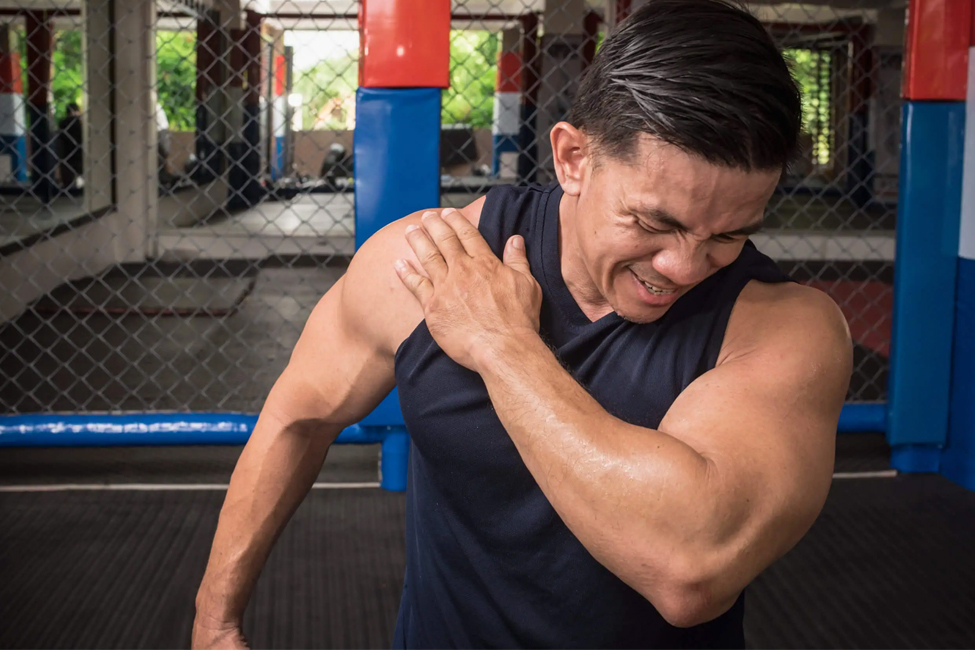Shoulder surgery is a solution for those grappling with persistent shoulder pain, injuries, or restricted mobility. Shoulder surgery, performed by skilled orthopaedic specialists, addresses a spectrum of conditions, from rotator cuff injuries to arthritis and shoulder instability.
What Is Shoulder Surgery?
Shoulder surgery is a medical intervention designed to address a range of shoulder-related issues, including injuries, chronic pain, and mobility limitations. The procedures involve repairing damaged tissues, stabilising the shoulder joint, or replacing damaged parts with artificial components.
Common Reasons For Undergoing Shoulder Surgery
Shoulder surgery may be recommended for various reasons, often to address conditions that cause pain, limited range of motion, or functional impairment in the shoulder joint. Here are some common reasons for undergoing shoulder surgery:
Rotator Cuff Tears
Tears in the rotator cuff, a group of tendons and muscles that stabilise the shoulder joint can occur due to overuse, ageing, or traumatic injuries. Surgery may be recommended to repair the torn tendons.
Shoulder Impingement Syndrome
This occurs when the rotator cuff tendons become pinched between the shoulder blade and the top of the shoulder joint. Surgery may be needed to create more space and relieve the impingement.
Frozen Shoulder (Adhesive Capsulitis)
A frozen shoulder is characterised by stiffness and pain in the shoulder joint. Surgical interventions, such as manipulation under anaesthesia or arthroscopic release, may be considered if conservative treatments are ineffective.
Labral Tears
The labrum is a ring of cartilage that surrounds the shoulder socket. Tears in the labrum can cause pain and instability. Surgery may involve repairing or reattaching the torn labrum.
Shoulder Instability
Recurrent dislocations or a feeling of shoulder instability may necessitate surgical procedures to tighten ligaments or repair damaged structures, helping to improve stability.
Osteoarthritis
Osteoarthritis in the shoulder joint can cause pain and stiffness. In some cases, joint replacement surgery (shoulder arthroplasty) may be recommended to replace the damaged joint surfaces with artificial components.
Rheumatoid Arthritis
Inflammatory arthritis, such as rheumatoid arthritis, can affect the shoulder joint. Surgical options may include synovectomy (removal of inflamed joint lining) or joint replacement.
Biceps Tendon Disorders
Conditions affecting the long head of the biceps tendon, such as tendinitis or a tear, may require surgical intervention, such as biceps tenodesis or tenotomy.
Fractures
Fractures of the shoulder bones, particularly the proximal humerus, may require surgery for stabilisation and proper healing.
AC Joint Separation
Injury or trauma to the acromioclavicular (AC) joint can result in separation. Surgical intervention may be considered for severe cases to restore joint alignment.
SLAP Tears
Superior Labrum Anterior to Posterior (SLAP) tears involve the top part of the labrum. Surgery may be considered for repair or reattachment of the torn labrum.
Preparing For Shoulder Surgery
Preparing for shoulder surgery is crucial to ensure a smooth and successful procedure. At TOPS, our team is committed to guiding you through this process. Here’s what you can expect:
Preoperative Evaluation
Before surgery, a comprehensive evaluation is conducted to assess your overall health and the specific condition of your shoulder. This may involve physical examinations, medical history reviews, and imaging tests.
Medical Optimization
Your orthopaedic team will work to optimise your health before surgery. This may include managing existing medical conditions, adjusting medications, and addressing potential risk factors.
Educational Consultation
A preoperative consultation is scheduled to discuss the details of the surgery, the expected outcomes, and any potential risks or complications. This is an opportunity for you to ask questions and gain a clear understanding of the procedure.
Lifestyle Adjustments
Depending on the type of shoulder surgery, your surgeon may recommend lifestyle adjustments. This could involve modifying daily activities, arranging for assistance during the initial recovery period, and making your home environment more conducive to a smooth recovery.
Fasting and Medication Guidelines
You will receive specific guidelines on fasting before surgery, including when to stop eating and drinking. Additionally, instructions regarding the use of medications, especially blood thinners, will be provided.
Preoperative Exercises
In some cases, your orthopaedic team may recommend preoperative exercises to strengthen the muscles around the shoulder. This can contribute to a smoother recovery and improved postoperative outcomes.
Arrangements for Postoperative Care
Planning for postoperative care is essential. This may involve arranging transportation to and from the hospital, ensuring you have the necessary postoperative medications, and having a support system for the initial recovery period.
Types Of Shoulder Surgery Procedures
Various shoulder surgery procedures are designed to address specific conditions or injuries affecting the shoulder joint. Here are some common types of shoulder surgery:
Rotator Cuff Repair
Rotator cuff repair is a surgical procedure focused on restoring function and alleviating pain by stitching together a torn rotator cuff tendon. This intervention is commonly indicated for individuals experiencing a torn rotator cuff due to factors such as injury, overuse, or degenerative conditions.
Shoulder Arthroscopy
Shoulder arthroscopy, a minimally invasive procedure, employs a small camera and specialised instruments to diagnose and treat various shoulder conditions. Indications for this approach include addressing issues like rotator cuff tears, labral tears, and shoulder impingement, offering both diagnostic clarity and targeted treatment.
Labral Repair
Labral repair involves the surgical repair or reattachment of the labrum, the cartilaginous ring encircling the shoulder socket. This procedure is indicated for those with labral tears resulting from trauma, dislocation, or repetitive overhead activities, aiming to restore stability and function to the shoulder joint.
Shoulder Decompression (Acromioplasty)
Shoulder decompression, or acromioplasty, entails the removal of bone spurs or damaged tissue to create more space in the shoulder joint. Indications for this procedure primarily include addressing shoulder impingement syndrome, providing relief from discomfort and restoring optimal joint functionality.
Total Shoulder Replacement (Total Shoulder Arthroplasty)
Total shoulder replacement involves the replacement of a damaged shoulder joint with artificial components, effectively alleviating advanced osteoarthritis, rheumatoid arthritis, or severe fractures. This procedure aims to restore joint function and reduce pain, offering a viable solution for those with debilitating shoulder conditions.
Reverse Total Shoulder Replacement (Reverse Shoulder Arthroplasty)
Reverse total shoulder replacement reverses the placement of shoulder components, offering a solution for severe rotator cuff tears with arthritis or cases of failed previous shoulder replacements. By attaching the ball to the shoulder blade and the socket to the upper arm bone, this procedure enhances joint stability and functionality.
Biceps Tenodesis or Tenotomy
Biceps tenodesis or tenotomy addresses biceps tendon disorders through surgical intervention, either by cutting or reattaching the biceps tendon. Indications for this procedure include tendinitis, tears, or other issues affecting the biceps tendon, providing relief and restoring optimal function.
SLAP Repair (Superior Labrum Anterior to Posterior)
SLAP repair involves the surgical reattachment or repair of the superior labrum, particularly the section where the biceps tendon attaches. Indications for this procedure include SLAP tears resulting from trauma or overuse, aiming to restore stability to the shoulder joint.
Shoulder Stabilization (Bankart Repair)
Shoulder stabilisation, also known as Bankart repair, focuses on repairing the labrum and ligaments to stabilise the shoulder joint and prevent dislocations. Indications for this procedure are recurrent shoulder dislocations or instability, offering a comprehensive solution to enhance joint stability.
Distal Clavicle Resection (AC Joint Resection)
Distal clavicle resection involves the removal of the outer end of the collarbone to address issues such as arthritis or impingement at the acromioclavicular (AC) joint. Indications for this procedure include AC joint arthritis or impingement, aiming to alleviate pain and improve joint function.
Shoulder Fracture Repair
Shoulder fracture repair is a surgical fixation procedure addressing fractures in the shoulder bones, such as the humerus or collarbone. Indications for this intervention include fractures resulting from trauma or injury, ensuring proper alignment and stability in the affected bones.
Thoracic Outlet Decompression
Thoracic outlet decompression is a procedure to relieve pressure on nerves or blood vessels in the thoracic outlet. Indications for this intervention are cases of thoracic outlet syndrome causing pain, numbness, or tingling in the arm, offering relief and restoring normal vascular and neural function.
Latarjet Procedure
The Latarjet procedure involves transferring a piece of bone from the shoulder blade to the front of the shoulder socket, enhancing joint stability. Indications for this surgical intervention are recurrent shoulder dislocations or instability, providing a structural solution to prevent future dislocation events.
The Shoulder Surgery Process
The shoulder surgery process involves several key steps to address specific shoulder issues and promote optimal recovery:
Preoperative Preparation
Before the surgery, a thorough assessment of your shoulder condition is conducted, including physical examinations and imaging tests. Lifestyle adjustments may be recommended, and medical optimisation is undertaken to ensure your overall health.
Educational Consultation
You’ll have a consultation with your orthopaedic team to discuss the details of the surgery, expected outcomes, and potential risks. This session is designed to address any questions or concerns about the procedure.
Fasting and Medication Guidelines
Specific guidelines will be provided regarding fasting before surgery and medication adjustments, especially blood thinners, to minimise risks during the procedure.
Anesthesia and Incision
On the day of surgery, anaesthesia is administered to ensure a pain-free experience. The surgeon then makes an incision, the size and location of which depend on the type of shoulder surgery being performed.
Surgical Intervention
The surgeon may perform repairs, stabilisations, or replacements depending on the shoulder issue. Arthroscopic procedures involve smaller incisions and specialised tools, minimising tissue disruption.
Wound Closure
Once the necessary repairs or replacements are completed, the incision is closed using sutures or staples. The wound is dressed, and you are moved to a recovery area.
Immediate Postoperative Care
You’ll be closely monitored for any immediate complications in the recovery area. Pain management strategies are initiated, and gentle movements may be encouraged to prevent stiffness.
Hospital Stay
The length of your hospital stay varies, with physical therapists working with you to initiate controlled exercises, focusing on joint mobility and strength.
Recovery And Rehabilitation
Recovery and rehabilitation following shoulder surgery are vital for optimising outcomes and restoring functionality. Here’s a concise overview:
- Initial recovery involves close monitoring for complications, pain management, and gentle movements to prevent stiffness.
- The duration varies, with physical therapists guiding controlled exercises to improve joint mobility and strength.
- Strategies for pain relief are implemented, with prescribed medications and adjustments as needed.
- Upon discharge, recovery continues at home, adhering to postoperative care instructions. Outpatient physical therapy sessions may be recommended for further improvement.
- Over weeks and months, a gradual return to daily activities is encouraged, possibly using assistive devices initially.
- The focus shifts to long-term rehabilitation, emphasising endurance, flexibility, and overall joint function through consistent engagement in prescribed exercises.
- Regular follow-up appointments with the orthopaedic surgeon, including X-rays, are essential for tracking progress and addressing concerns.
- Lifestyle adjustments, such as modifying activities and maintaining a healthy routine, contribute to sustained success and improved shoulder health.
Schedule Your Appointment Now
For those contemplating shoulder surgery, the journey towards improved shoulder health is an empowering and transformative experience. Our commitment to compassionate care and orthopaedic excellence at TOPS ensures personalised solutions for your unique needs.
If persistent shoulder pain or limited mobility affects your daily life, take the first step toward relief. Seek professional advice from our experienced team. From informative consultations to modern surgical interventions, we are dedicated to guiding you through the process, ensuring a positive experience and a return to an active, pain-free lifestyle.
Don’t let shoulder discomfort hinder your quality of life any longer. Contact us today to schedule a consultation and embark on the path toward renewed shoulder health. Your journey to improved mobility and comfort starts with a call to TOPS.







